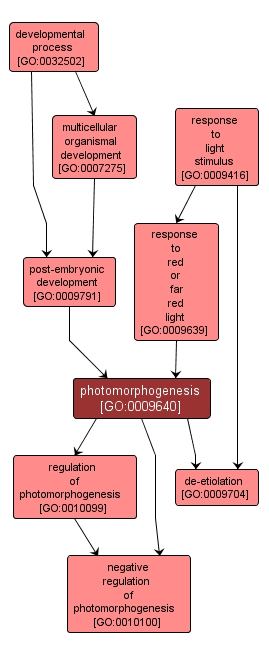GO TERM SUMMARY
|
| Name: |
photomorphogenesis |
| Acc: |
GO:0009640 |
| Aspect: |
Biological Process |
| Desc: |
The control of plant growth, development, and differentiation by the duration and nature of light, independent of photosynthesis. |
Synonyms:
- plant development in response to light
|
|

|
INTERACTIVE GO GRAPH
|














